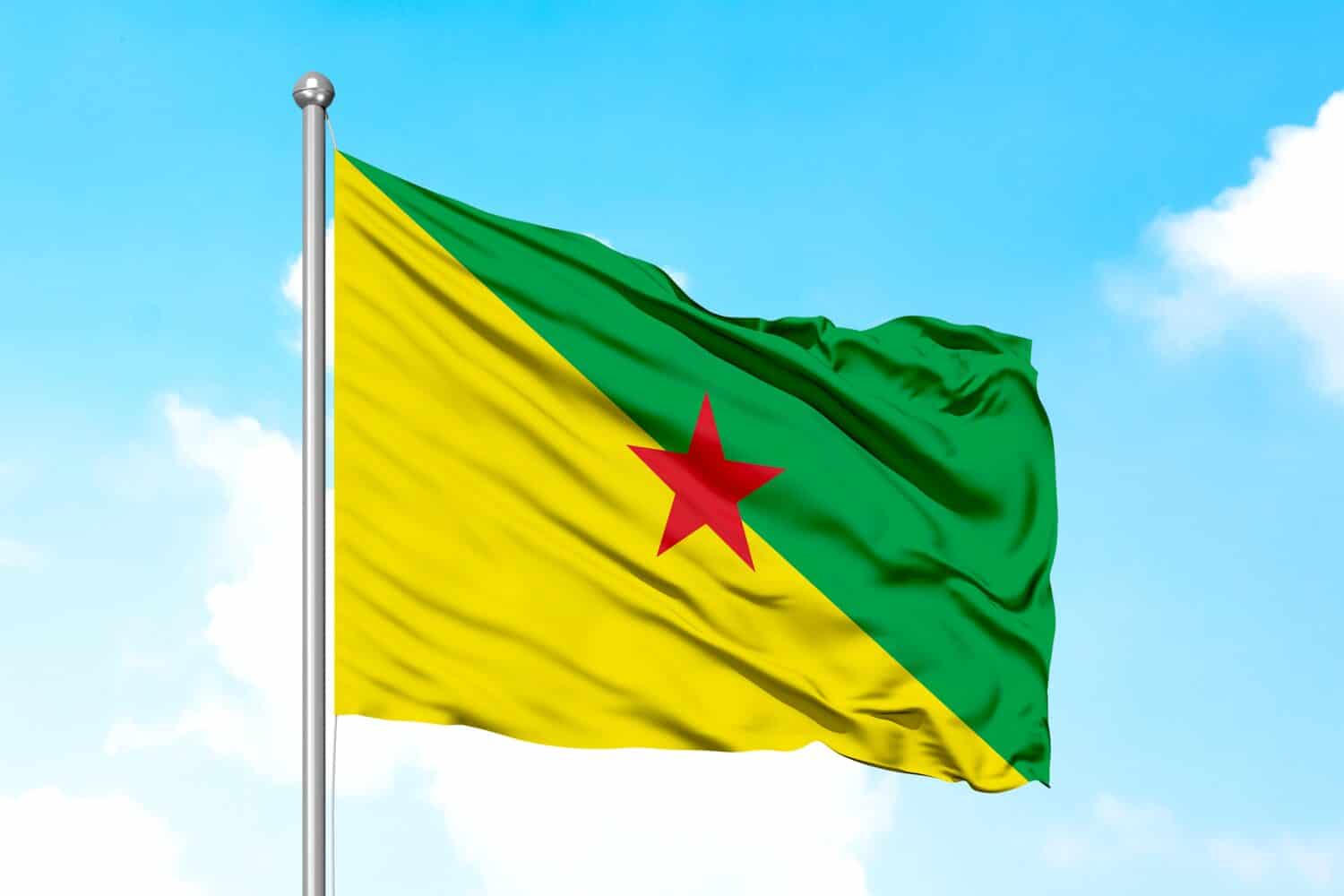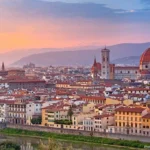
Nestled along the northeastern coast of South America, French Guiana unfolds as a captivating tapestry of history, culture, and natural wonders. From its early discovery by Christopher Columbus to its establishment as a French colony in the 17th century, this overseas department of France has evolved into a unique and diverse region. With its capital city, Cayenne, serving as a vibrant center of cultural fusion, French Guiana embraces a rich blend of Creole, Amerindian, Maroon, and European influences. Beyond its cultural richness, the territory’s geography showcases dense rainforests, extensive river systems, and a coastline along the Atlantic Ocean. Explore with us as we delve into the fascinating historical facts and numerical trivia that define French Guiana’s past and present, from its pivotal role in the space industry to its challenges in healthcare and education.
Discovery and Colonization:
French Guiana’s history dates back to Christopher Columbus’s discovery in 1498. The region became a focal point for European colonization in the 17th century. The French established the first settlement in 1624, and by 1667, it officially became a French colony. Throughout its history, French Guiana played a strategic role in trade and navigation due to its location on the northeastern coast of South America.
Geography:
French Guiana’s geography is characterized by a diverse landscape, encompassing dense rainforests, extensive river systems, and a stretch of coastline along the Atlantic Ocean. Covering approximately 83,534 square kilometers, the region’s unique topography contributes to its rich biodiversity, with numerous plant and animal species thriving in its various ecosystems.
Capital:
The capital city, Cayenne, is not only the political and administrative center of French Guiana but also a cultural hub. With its vibrant mix of Creole, Amerindian, and European influences, Cayenne reflects the region’s diverse heritage. The city is home to historical landmarks, including Fort Cépérou, and hosts the annual carnival, a colorful celebration of local culture.
Population:
As of 2022, French Guiana has an estimated population of around 290,000 people. This relatively low population is attributed to the region’s challenging environmental conditions, including the prevalence of tropical diseases and dense rainforests that limit habitable areas.
Diversity:
French Guiana’s population is characterized by a harmonious blend of Creole, Amerindian, Maroon, and European communities. This cultural diversity contributes to the region’s unique identity, reflected in its languages, traditions, and cuisine.
Currency:
The official currency of French Guiana is the Euro (EUR), highlighting its status as an overseas department of France. The use of the Euro facilitates economic integration with the European Union and simplifies financial transactions between French Guiana and the mainland.
Administrative Division:
French Guiana is administratively divided into two arrondissements: Cayenne and Saint-Laurent-du-Maroni. This division helps in the efficient governance and delivery of public services across different regions of the territory.
National Park:
The Guiana Amazonian Park, established in 2007, stands as a testament to French Guiana’s commitment to preserving its unique biodiversity. Covering approximately 33,900 square kilometers, the park is a UNESCO World Heritage site and is crucial for the conservation of the Amazon rainforest in this part of South America.
Space Center:
French Guiana gained global prominence with the establishment of the Guiana Space Centre (CSG) in 1968. Situated in Kourou, the spaceport has become a key player in the international space industry, hosting numerous satellite launches for the European Space Agency (ESA) and the French space agency CNES.
Kourou:
Kourou, located in French Guiana, is synonymous with space exploration and technology. As the home of the Guiana Space Centre, Kourou has transformed into a vital space launch site, attracting scientists, engineers, and space enthusiasts from around the world. The town’s infrastructure and economy are intricately linked to its role in supporting space missions and satellite launches. The presence of Kourou reinforces French Guiana’s significance in the global space community.
Launch Records:
The Guiana Space Centre (CSG) in French Guiana holds a remarkable record as one of the most active spaceports globally. Its strategic location near the equator allows for more efficient launches, leveraging the Earth’s rotational speed to propel spacecraft into orbit with less fuel consumption. This has made the CSG a preferred choice for a wide array of satellite launches, contributing significantly to the field of space exploration.
Population Density:
French Guiana maintains a low population density, with approximately 3.5 people per square kilometer. This sparse population distribution is influenced by the vast, dense rainforests that cover much of the territory, limiting suitable areas for habitation. The challenge of infrastructure development in such remote and environmentally sensitive areas further contributes to the region’s low population density.
Maroons:
The history of French Guiana is intertwined with the presence of Maroons, descendants of escaped African slaves who formed independent communities in the region’s interior. These communities, known as “marronage,” played a crucial role in shaping the cultural landscape of French Guiana and contributed to the rich tapestry of traditions found in the territory today.
Incorporation into France:
French Guiana became an overseas department of France in 1946, marking a significant shift in its political status. This integration into the French Republic brought about changes in governance, legal systems, and economic policies, aligning the territory more closely with the administrative framework of mainland France.
Biodiversity:
French Guiana boasts exceptional biodiversity, housing an extensive array of plant and animal species within its lush rainforests. The Guiana Amazonian Park, a UNESCO World Heritage site, plays a crucial role in preserving this rich biodiversity, serving as a sanctuary for numerous endangered and unique species endemic to the region.
Tropical Climate:
The tropical climate of French Guiana is characterized by high temperatures and significant rainfall. This climatic condition supports the growth of diverse ecosystems, including rainforests, wetlands, and savannahs. However, it also poses challenges such as the risk of tropical diseases and the need for sustainable environmental management.
Transportation:
Transportation in French Guiana primarily relies on a network of roads and rivers. The challenging terrain, including dense rainforests and numerous waterways, necessitates unique modes of transport. The Félix Eboué International Airport serves as a crucial gateway, connecting French Guiana to international destinations and facilitating the transport of goods and people within the region.
Economy:
The economy of French Guiana is multifaceted, with key sectors including the space industry, agriculture, and mining. The Guiana Space Centre significantly contributes to the economy, attracting international investments and fostering technological advancements. Agriculture, including the cultivation of bananas and other tropical fruits, and mining activities, particularly gold extraction, also play vital roles in the region’s economic landscape.
Illegal Gold Mining:
French Guiana faces environmental challenges due to illegal gold mining, particularly in the rainforest areas. This activity contributes to deforestation, soil and water pollution, and threatens the delicate ecological balance of the region. Efforts to address this issue involve a combination of law enforcement, environmental conservation initiatives, and sustainable economic alternatives for affected communities.
Cultural Festivals:
The annual carnival in Cayenne stands as a vibrant celebration of French Guiana’s cultural diversity. Featuring colorful parades, traditional music, and elaborate costumes, the carnival attracts locals and visitors alike. This cultural event provides a platform for the expression of the region’s unique identity, showcasing its Creole, Amerindian, and European influences in a festive and joyous atmosphere.
Largest River:
The Maroni River holds the distinction of being the longest river in French Guiana, stretching across approximately 350 kilometers. Serving as a natural border with neighboring Suriname, the Maroni River plays a crucial role in the region’s geography and ecology, supporting diverse aquatic life and facilitating transportation.
Highest Point:
Bellevue de l’Inini stands as the highest point in French Guiana, reaching an elevation of 851 meters. This elevated peak is part of the Tumuc-Humac mountain range and provides stunning panoramic views of the surrounding rainforest and landscapes, making it an area of interest for nature enthusiasts and hikers.
Language:
French is the official language of French Guiana, reflecting its status as an overseas department of France. While French is predominantly spoken, a rich linguistic tapestry exists, with various communities maintaining their native languages and contributing to the linguistic diversity of the region.
Healthcare Challenges:
French Guiana faces significant healthcare challenges, including a high prevalence of infectious diseases such as dengue fever and malaria. The tropical climate creates favorable conditions for the spread of these diseases, requiring ongoing public health efforts, international collaborations, and community education to mitigate their impact on the population.
Challenges in Education:
The region faces challenges in the education sector, with efforts underway to improve access and quality of education for the population. The remote and diverse nature of French Guiana poses logistical challenges in establishing educational infrastructure. Initiatives focus on addressing these obstacles, ensuring that residents have equitable access to educational opportunities and fostering the development of a skilled workforce for the region’s future.
People frequently ask:
Does French Guiana have an official flag?
French Guiana does have an official flag. The flag of French Guiana features a red field with a narrow yellow border on the top and bottom. In the center, there is a stylized image of the territory’s coat of arms, which includes a blue shield with three gold lilies, a red chief with a yellow thunderbolt, and a green and white wavy base representing the Amazonian rainforest and the Maroni River.
Is French Guiana an official country?
French Guiana is not an independent, sovereign country; instead, it is an overseas department and region of France. As such, it is fully integrated into the French Republic, and its residents are French citizens. French Guiana is subject to French law, and its political and administrative structure is aligned with that of mainland France.
Is French Guiana and Guyana the same?
French Guiana and Guyana are two distinct entities. French Guiana is an overseas department of France, located on the northeastern coast of South America, while Guyana is a sovereign country situated to the west of French Guiana. They share a border, with the Maroni River serving as a natural boundary between them.
Why does France still have French Guiana?
France retains control over French Guiana for historical, strategic, and economic reasons. The territory’s geographic location, with the Guiana Space Centre providing a significant space launch site, holds strategic importance for France and the European Space Agency. Additionally, French Guiana’s natural resources, including gold and biodiversity, contribute to its economic value. The region’s historical ties to France and its status as an overseas department further influence the decision to maintain French sovereignty over French Guiana.









